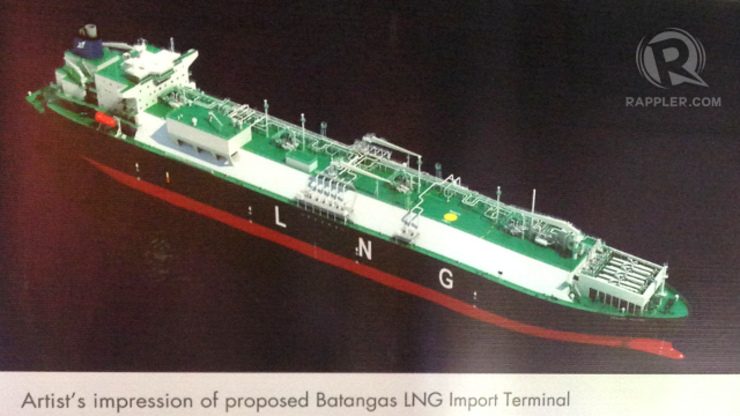SUMMARY
This is AI generated summarization, which may have errors. For context, always refer to the full article.

MANILA, Philippines – Pilipinas Shell Petroleum Corporation, which is eyeing two massive liquefied natural gas (LNG) terminals in the country, is urging the government to create policies to encourage investments in the LNG sector.
Shell has been batting for incentives for potential players in the development of an LNG facility because such investment is capital intensive, said Shell country chairman Ed Chua.
“The policy has to be prescriptive. It can’t be purely guidelines. In other countries, there’s a cap on coal,” said Chua.
Chua was referring to the new fuel policy mix that the Department of Energy (DOE) is set to release soon.
The policy will identify the contribution of LNG, natural gas, coal, oil, and renewable energy to the country’s power generation.
In particular, the agency wants the share of both LNG and natural gas to increase to 30% in a bid to encourage energy diversification in the country. At present, coal is the dominant fuel in the mix.
To date, the government has received unsolicited proposals from the private sector to boost natural gas investments in the country.
The proposals include developing a favorable investment climate by eliminating bottlenecks; more fiscal incentives; consistency in policy and regulations; improved infrastructure, and strengthened government inter-agency collaboration through Executive Order 60 creating the Philippine Upstream Petroleum Task Force.
“There should be a clear policy on fuel mix and government should encourage the private sector in investing in the LNG,” added Chua.
Energy Secretary Carlos Jericho Petilla said his office is looking for ways to spur LNG investments.
“We are trying to look at ways how to actually give incentives to balance other energy resources. Perhaps, give tax perks, like in renewable energy sources. I have recommended this to the BOI (Board of Investments),” Petilla said.
Building LNG terminals
Shell already expressed plans to build LNG terminals – a floating storage and regasification unit – adjacent to its refinery in Batangas City.
The capacity of the floating LNG storage can deliver as much as 2,000 megawatts (MW) while the onshore facility can power up to 5,000MW, Chua said.
“This will be done in phases. The first is the floating storage. Then, build an on-shore facility, so it won’t be expensive and can be built fast,” Chua explained.
Shell awarded the front-end engineering and design (FEED) study for the LNG project, which costs at least $1 billion based on industry estimates.
Shell’s Technology Centre Bangalore will carry out the FEED. The India-based center delivers advanced technical studies, projects, and services for Shell around the world.
The company’s investment in LNG in the country would not be wasted because demand for it will grow over time and that the government will provide the needed support to encourage big-ticket investments in the energy sector, Chua said.
“Commercial off takers will only sign up if there’s a policy that guarantees that there is a market for power produced form LNG. This will be more expensive than power produced from coal,” Chua stressed.
Although expensive, LNG is the preferred fuel for sustainable growth and development because it is cleaner than fossil fuel, Petilla said.
“Bear in mind that although Shell is pushing for that, there are LNG and gas fired power plants in Thailand which are not running because it’s expensive,” Petilla said. “Eventually, the LNG market will mature. When this happens, the price will substantially go down as well.”
Shell’s Batangas LNG project will allow the company to increase the supply of natural gas – the cleanest burning fossil fuel – to the Philippines, helping to meet growing energy demand, said Roger Bounds, Shell’s Vice President Global LNG.
“Our ability to meet our customers’ long-term energy needs and respond flexibly to short-term changes in demand will help ensure diversity and security of supply to the Philippines,” Bounds said.
Shell is ideally placed to successfully deliver this important project for the Philippines, Chua added.
“We look forward to successfully implementing the first floating storage and re-gasification unit in the Philippines. This will help enable continued gas supply into the future, beyond the life of the Malampaya asset,” Chua said.
The Malampaya project is spearheaded by DOE, and developed and operated by Shell Philippines Exploration B.V. (Spex) on behalf of joint-venture partners Chevron Malampaya LLC and PNOC Exploration Corporation. (READ: Malampaya gas field can fuel plants after 2030) – Rappler.com
Add a comment
How does this make you feel?
There are no comments yet. Add your comment to start the conversation.